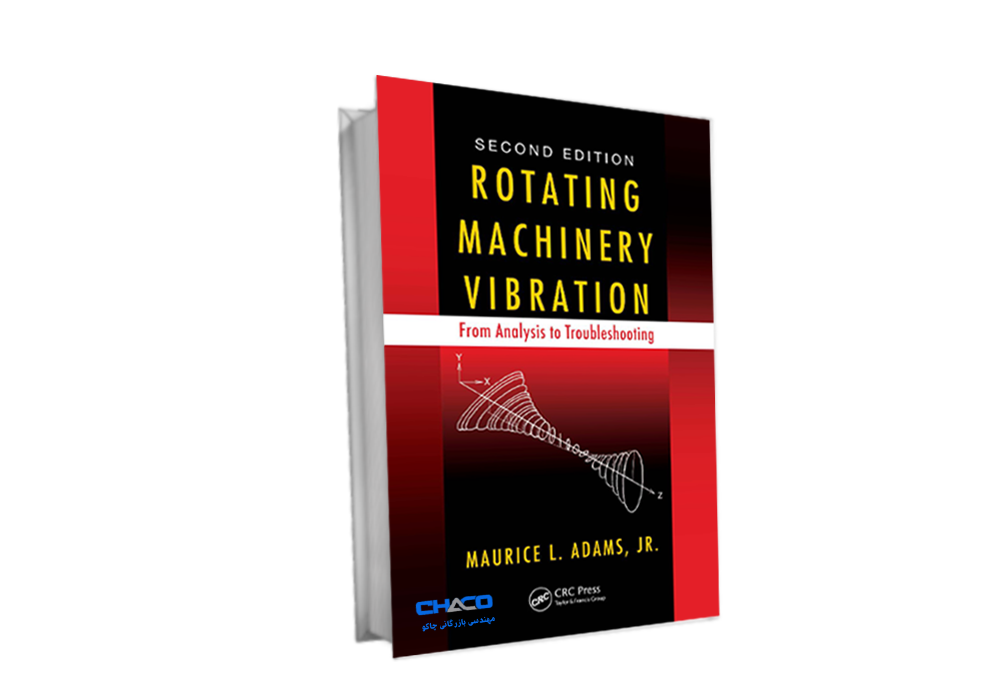

Preface
Every spinning rotor has some vibration, at least a once-per-revolution frequency component, because it is of course impossible to make any rotor perfectly mass balanced. Experience has provided guidelines for quanti- fying approximate comfortable safe upper limits for allowable vibration levels on virtually all types of rotating machinery. It is rarely disputed that such limits are crucial to machine durability, reliability, and life. However, the appropriate magnitude of such vibration limits for specific machin- ery is often disputed, with the vendor’s limit usually being higher than a prudent equipment purchaser’s wishes. Final payment for a new machine is occasionally put on hold, pending resolution of the machine’s failure to operate below the vibration upper limits prescribed in the purchase specifications.
The mechanics of rotating machinery vibration is an interesting field, with considerable technical depth and breadth, utilizing first principles of all the mechanical engineering fundamental areas, solid mechanics, dynamics, fluid mechanics, heat transfer, and controls. Many industries rely heavily on reliable trouble-free operation of rotating machinery. These industries include power generation; petrochemical processes; manufac- turing; land, sea and air transportation; heating and air conditioning; aerospace propulsion; computer disk drives; textiles; home appliances; and a wide variety of military systems. However, the level of basic under- standing and competency on the subject of rotating machinery vibration varies greatly among the various affected industries. In the author’s opin- ion, all industries reliant on rotating machinery would benefit significantly from a strengthening of their in-house competency on the subject of rotating machinery vibration. A major mission of this book is to foster an understanding of rotating machinery vibration, in both industry and academia.
Even with the best of design practices and the most effective methods of avoidance, many rotor vibration causes are so subtle and pervasive that incidents of excessive vibration in need of solutions continue to occur. Thus, a major task for the vibrations engineer is diagnosis and correction. To that end, this book is comprised of four sequential parts.
Part I: Primer on Rotor Vibration is a group of three chapters that develop the fundamentals of rotor vibration, starting with basic vibration concepts, followed by lateral rotor vibration and torsional rotor vibration principles and problem formulations.
Part II: Use of Rotor Dynamic Analyses is a group of three chapters focused on the general-purpose lateral rotor vibration PC-based code supplied with this book. This code was developed in the author’s group at Case Western Reserve University and is based on the finite element approach explained in Part I. Major topics are the calculation of rotor unbalance response, the calculation of self-excited instability vibration thresholds, bearing and seal dynamic properties, and turbo-machinery impeller and blade effects on rotor vibration. In addition to their essential role in the total mission of this book, Parts I and II also provide the fundamentals of the author’s graduate-level course in rotor vibration. In that context, Parts I and II provide an in-depth treatment of rotor vibration design analysis methods.
Part III: Monitoring and Diagnostics is a group of three chapters on mea- surements of rotor vibration and how to use the measurements to identify and diagnose problems in actual rotating machinery. Signal analysis meth- ods and experience-based guidelines are provided. Approaches are given on how measurements can be used in combination with computer model analyses to optimally diagnose and alleviate rotor vibration problems.
Part IV: Trouble-Shooting Case Studies is a group of three chapters devoted to rotor vibration trouble-shooting case studies and topics from the author’s many years of troubleshooting and problem-solving experiences. Major problem-solving cases include critical speeds and high sensitivity to rotor unbalance, self-excited rotor vibration and thresholds, unique rotor vibration characteristics of vertical machines, rub-induced high-amplitude vibration, loose parts causing excessive vibration levels, excessive support structure vibration and resonance, vibration-imposed DC motor-generator uneven commutator wear, and rotor balancing. The sizes of machines in these case studies range from a 1300 MW steam turbine generator unit to a 10 kW APU for a jet aircraft. These case studies are heavily focused on power generation equipment, including turbines, generators, exciters, large pumps for fossil-fired and nuclear PWR and BWR-powered plants, and air handling equipment. There is a common thread in all these case studies: namely, the combined use of on-site vibration measurements and signal processing along with computer-based rotor vibration model devel- opment and analyses as the optimum overall multipronged approach to
maximize the probability of successfully identifying and curing problems of excessive vibration levels in rotating machinery.
The main objectives of this book are to cover all the major rotor vibration topics in a unified presentation, and to demonstrate the solving rotating machinery vibration problems. These objectives are addressed by provid- ing depth and breadth to the governing fundamental principles plus a background in modern measurement and computational tools for rotor vibration design analyses and troubleshooting. In all engineering problem- solving endeavors, the surest way to success is to gain physical insight into the important phenomena involved in the problem, and that axiom is especially true in the field of rotating machinery vibration. It is the author’s hope that this book will aid those seeking to gain such insight.
یک کتاب تخصصی در زمینه ارتعاشات ماشینآلات چرخشی است که به بررسی و تحلیل ارتعاشات مربوط به ماشین آلاتی که در حال چرخش هستند، میپردازد. این کتاب ممکن است به مهندسان مکانیک، مهندسان برق و افرادی که در زمینه های تخصصی مرتبط با ارتعاشات و نظارت از نزدیک بر ماشین آلات مشغول به کار هستند، مفید باشد. در محتوای این کتاب، مسائل مرتبط با تشخیص، اندازهگیری و کنترل ارتعاشات در ماشینآلات مورد بررسی قرار میگیرد.
ثبت درخواست خدمات:
گروه مهندسی بازرگانی چاکو با داشتن متخصصان ماهر انواع خدمات بالانس، پایش وضعیت و … را با بهترین تجهیزات به شما ارائه خواهد داد.